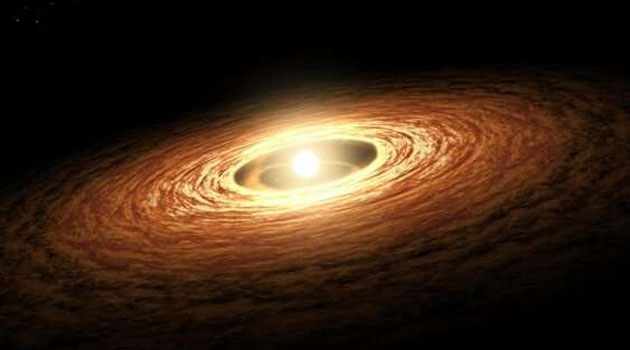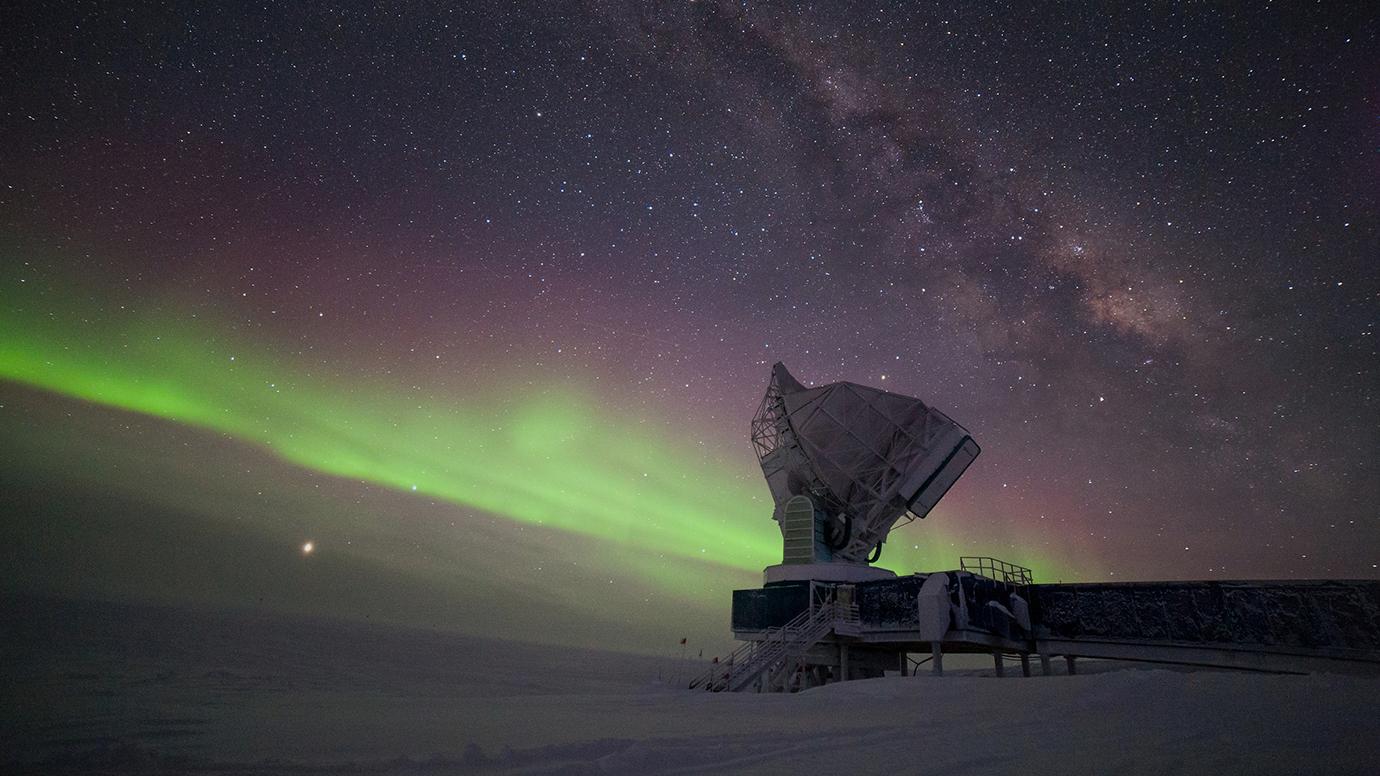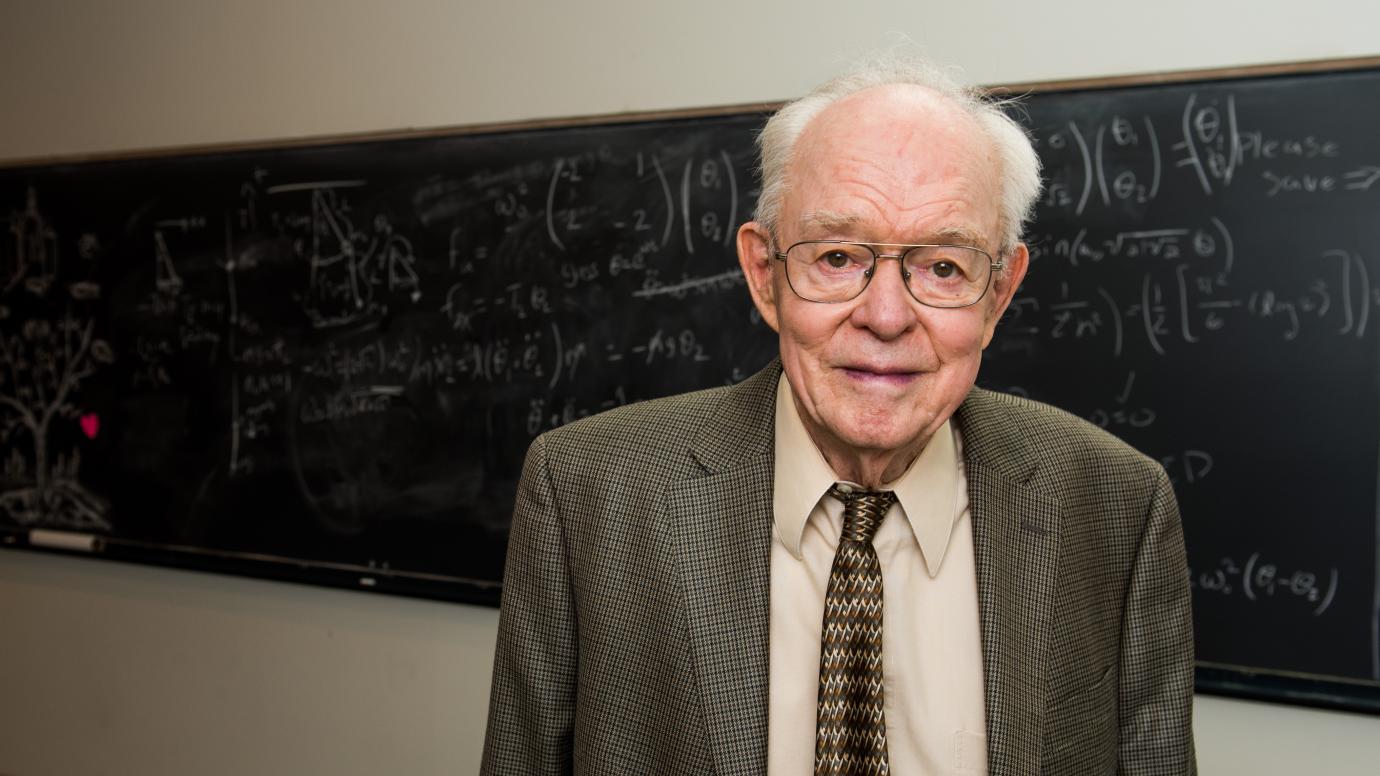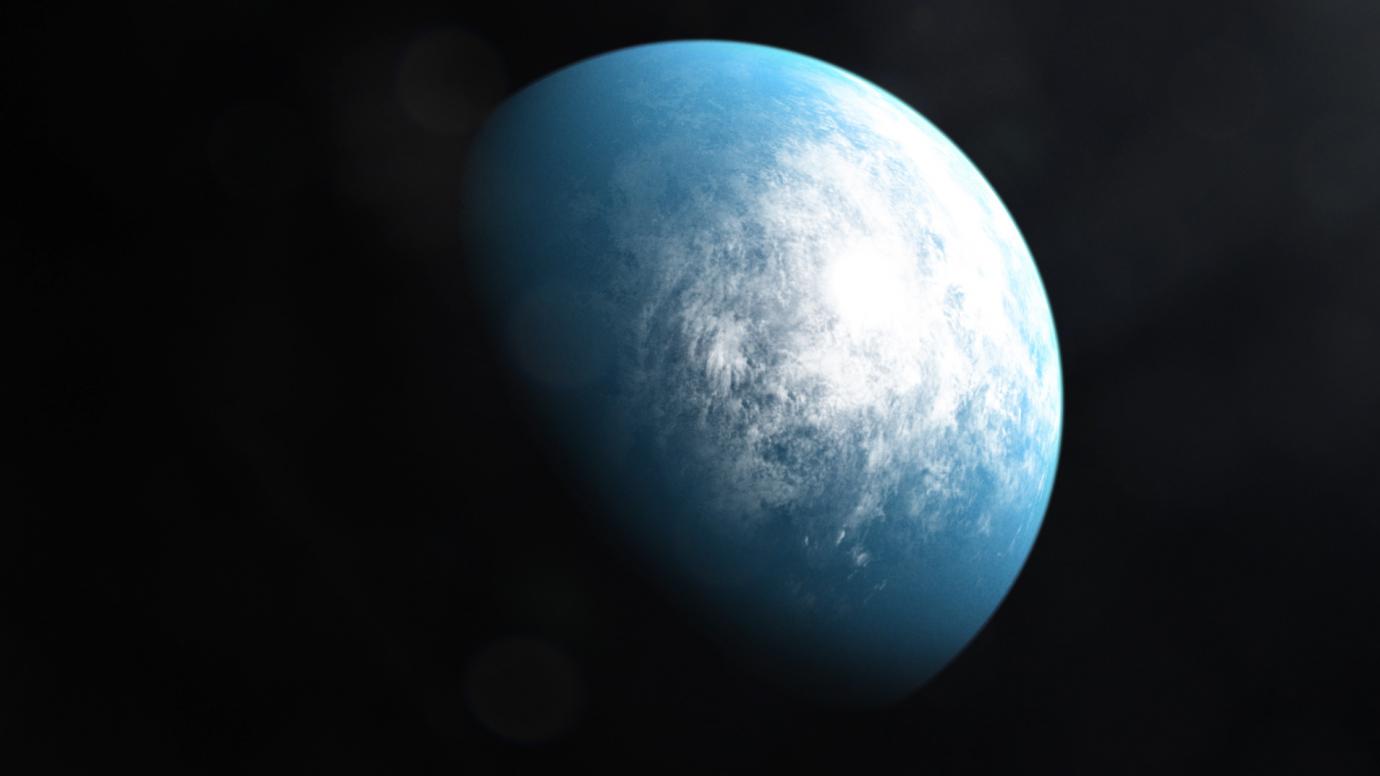 |
 |
 |
 |
 |
 |
 |
 |
 |
 |
 |
 |
|
News
|
Department in the News: 2020
Scientists seize rare chance to watch faraway star system evolve March 4, 2020 Young stars are surrounded by dense disks of gas and dust – the raw materials for creating planets. Over time, the disk scatters and disappears, making new planets visible to outside observers. Phys.org, by Sherry LandowCredit: NASA/JPL-Caltech Click on the image to enlarge At only 1% the age of the sun, the DS Tuc binary system shows us how a planet might naturally develop before its orbit is disturbed by external forces. A young planet located 150 light-years away has given UNSW Sydney astrophysicists a rare chance to study a planetary system in the making. "Finding young planets is challenging. We really need to understand the behavior of the parent star to be able to find the shallow signals of these planets which can be overwhelmed by starspots and flares," says Adina Feinstein, a National Science Foundation Graduate Research Fellow at the University of Chicago and co-author of the study. Related: Department students: Adina Feinstein Leftover Big Bang light helps calculate how massive faraway galaxies are March 3, 2020 The South Pole Telescope and Dark Energy Camera provided key data for scientists to create a new method to weigh galaxy clusters. UChicago NewsPhoto by Daniel Michalik Click on the image to enlarge Fermilab, UChicago scientists tap South Pole Telescope data to shed light on universe A team of scientists have demonstrated how to "weigh" galaxy clusters using light from the earliest moments of the universe - a new method that could help shed light on dark matter, dark energy and other mysteries of the cosmos, such as how the universe formed. The new method calculates the bending of light around galaxy clusters using the orientation of light from shortly after the Big Bang - data taken by the South Pole Telescope and the Dark Energy Camera. "Gravitational lensing," a phenomenon in which light distorts as it's affected by the gravity of big objects like galaxies, can function as a kind of magnifying glass. It's helped scientists discover key information about the universe - but it's always been done by looking for the smearing of light around distant objects like stars. In a study published in Physical Review Letters, Fermilab and University of Chicago scientist Brad Benson and colleagues use a different method to calculate the masses of distant galaxies: the polarization, or orientation, of the light left over from the moments after the Big Bang. "Making this estimate is important because most of the mass of galaxy clusters isn't even visible - it's dark matter, which does not emit light but interacts through gravity and makes up about 85% of the matter in our universe," said Benson, an assistant professor in the Department of Astronomy and Astrophysics. "Since photons from the cosmic microwave background have literally traveled across the entire observable universe, this method has the potential to more accurately measure the dark matter mass in the most distant galaxy clusters." Related: Department members: Bradford A. Benson, John E. Carlstrom Scientific projects: South Pole Telescope New Solar Telescope Reveals Sun's Surface in More Detail than Ever Before February 13, 2020 WTTW News, by Paul Caine A new solar telescope in Hawaii has captured images of the sun unlike any seen before. Professor Robert Rosner, an astrophysicist at the University of Chicago and one of the lead investigators on the project, says he's been waiting for almost 40 years to see images like the ones recently captured. "Those of us fascinated by the sun - and who would not be? - have been waiting since the 1980s to see the sun at high resolution, to see if the amazing structuring of the surface, from the grand sunspots down to the 'salt and pepper' smaller magnetic structure, continues to yet smaller spatial scales. And it does!" said Rosner. "The physics to be mined from this result, these remarkable images, are just so exciting." Related: Department members: Robert Rosner Prof. Eugene Parker wins prestigious Crafoord Prize in Astronomy January 31, 2020 Prof. Emeritus Eugene Parker, 92, laid the foundations for a new field of astrophysics with his research on stars and magnetic fields. UChicago News, by Louise LernerPhoto by Jean Lachat Click on the image to enlarge Swedish Royal Academy of Sciences honors UChicago scientist's pioneering work. The Royal Swedish Academy of Sciences announced Jan. 30 that University of Chicago Prof. Emeritus Eugene Parker has been awarded the 2020 Crafoord Prize in Astronomy. Awarded every three years, the prestigious Crafoord Prize consists of a gold medal and a sum of six million Swedish krona (about $600,000) - one of the largest prizes in science. The Academy, which is also responsible for selecting Nobel Prize winners, cited Parker for his "pioneering and fundamental studies of the solar wind and magnetic fields from stellar to galactic scales." Parker is widely known for his proposal of the solar wind, which radically changed scientists' understanding of the solar system. He suggested, and spacecraft later confirmed, that the sun radiates an intense stream of charged particles that travel throughout the solar system at supersonic speeds. The discovery reshaped our view of space, stars and their surroundings, and it laid the foundations for a new field of astrophysics. "I am humbled by the award of the Crafoord Prize," said Parker, now 92. "It gives strong incentive for maintaining the historic high level of research that merits the prize." Related: Department members: Eugene N. Parker NASA's TESS spacecraft discovers its first habitable planet, first world with two stars January 9, 2020 An illustration of what the climate of the newly discovered exoplanet TOI 700 d might look like. UChicago NewsIllustration courtesy NASA Goddard Space Flight Center/Chris Smith (USRA) Click on the image to enlarge Teams including UChicago scientists analyze Earth-size world and Tatooine-like planet Scientists from the University of Chicago --- Emily Gilbert, Adina Feinstein, Daniel Fabrycky and Benjamin Montet --- and other institutions around the world have discovered multiple new interesting worlds beyond Earth --- including its first potentially habitable Earth-size world and another that is a 'Star Wars'-type system with two suns. The new exoplanets --- planets beyond our solar system - were spotted with NASA's new TESS satellite and announced Jan. 6 at the 235th American Astronomical Society meeting. In both cases, high school students helped find them. Related: Department members: Daniel Fabrycky, Benjamin Montet Department students: Adina Feinstein, Emily Gilbert What will the next decade bring in science? January 2, 2020 NASA, ESA, the Hubble Heritage Team (STScI/AURA) and J. Green (University of Colorado, Boulder) UChicago NewsClick on the image to enlarge Daniel Holz, astrophysicist What do you think might be the most exciting result of scientific or technological advances in the next decade? Our gravitational wave detectors are getting more and more sensitive, so we'll learn a ton about the universe as we get more data. Then there's a few roll-of-the-dice things that could happen that would be amazing. Like if a supernova went off in our own galaxy --- with all the ways we have to detect astronomical events now, that would be an incredible way to learn about everything from the physics of stars to the history of the universe. Those happen about once every hundred years, so it could be anytime. Or maybe something unusual will pop up in our gravitational wave detectors --- we've picked up black hole collisions and neutron star collisions, but what if we detected waves from cosmic strings? The most exciting thing is always something you haven't anticipated. In astronomy, whenever we've invented a new way to look at the sky, we discover something new that no one had ever thought of before. Our gravitational wave detectors haven't discovered anything profoundly unexpected, at least not yet. What's a possible consequence of science or technology in the next decade that you worry about? Two things that worry me about the future are nuclear annihilation and climate change --- both due to technological advancements. I'm a member of the Bulletin of the Atomic Scientists, which sets the Doomsday Clock, so that's something we think about a lot. The next 10 years will be critical for climate. We can impact just how bad things will get decades from now. If we act now, we might avoid some of the worst, civilization-threatening outcomes. The danger of nuclear annihilation is on the rise, too. These are compounded by the deliberate erosion of facts and truth, which pose grave threats to society. The number of ways in which we walk blithely into Armageddon is very high. But that's something all of us can help address. Agitate for change! It's not too late. Related: Department members: Daniel E. Holz Scientific projects: Laser Interferometer Gravitational-wave Observatory |






